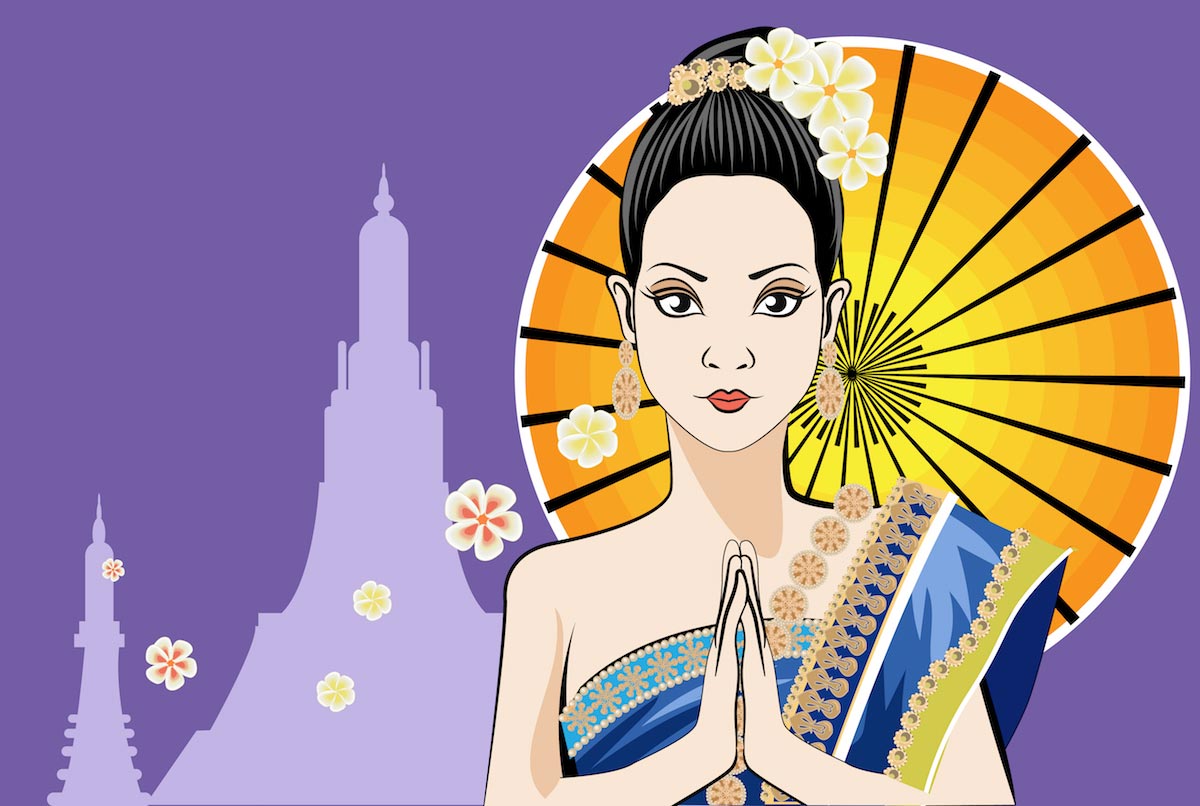Thailand is a country that hits your senses all at once—aromatic street food, glittering temples, smiling faces, and a rhythm of life that flows with unmistakable ease. But if you had to pin down the most unique aspect of Thai culture, what would it be?
Some might point to Muay Thai, others to Buddhism, or even Thai cuisine. But let’s cut through the noise. If there’s one thing that truly sets Thai culture apart, it’s “sanuk.” This little word holds a big meaning—it’s not just about having fun, but about finding joy and playfulness in everything you do. From work to family life to daily interactions, sanuk is the soul of Thailand.
Let’s break it down and explore what makes Thai culture so distinctive—and why sanuk is more than just a feel-good concept.
What Is “Sanuk” and Why Does It Matter?
At its core, sanuk is the Thai approach to life that insists things should be enjoyable. Whether you’re cooking dinner, running errands, or stuck in traffic—if you’re not having fun, you’re not doing it right.
Sanuk isn’t just optional—it’s expected. In a Thai office, for example, co-workers might crack jokes while handling serious tasks. At a market, bargaining can feel like playful banter rather than business. Even temple ceremonies, which are deeply spiritual, often have a lighthearted undercurrent.
Thai people believe life shouldn’t be too serious. They mix fun into daily routines the same way they’d toss chilies into papaya salad—naturally and with flair.
How Sanuk Shapes Everyday Thai Life
1. Work with a Smile
In Western cultures, there’s a common phrase: “Work hard, play hard.” In Thailand, those two ideas are often blended. People work with joy, not just for the weekend.
Thai employees might laugh during meetings, decorate their desks with cartoon characters, or break out into karaoke after hours—not to escape work, but to enhance it. Fun is part of the job.
2. Food as a Social Adventure
Ever sat down with Thai friends for a meal? You’ll notice something: no one orders for themselves. It’s all shared. Dishes come flying to the center of the table, and everyone digs in together. It’s chaotic, loud, and extremely sanuk.
Eating in Thailand isn’t just about getting full—it’s about connecting, laughing, and sometimes turning the meal into a game of who-can-eat-the-spiciest-bite.
3. Festivals: Fun on Steroids
From Songkran (Thai New Year) to Loy Krathong (Festival of Lights), Thai festivals are joyful explosions of color, water, lights, and music.
Take Songkran, for example. On paper, it’s a time to honor elders and cleanse bad luck. In practice? It’s the world’s biggest water fight. Streets turn into splash zones, and everyone’s fair game—even the police.
The Role of “Sanuk” in Thai Communication
Here’s where sanuk gets interesting—it’s not just about actions, it’s baked into how Thai people communicate. You’ll hear jokes, teasing, and playful sarcasm all the time.
Even serious conversations are often softened with humor. It’s part of maintaining “jai yen” (a cool heart)—another pillar of Thai culture. Instead of confrontation, Thais lean on lightness to keep things smooth.
And when things go wrong? A Thai person might shrug and say “mai pen rai” (it’s okay)—a phrase that pairs perfectly with sanuk, reminding everyone that life goes on, and it should go on with a smile.
Table – How “Sanuk” Compares with Other Cultural Values
| Culture | Core Value | How It’s Expressed |
|---|---|---|
| Thai | Sanuk (Joy in everything) | Humor at work, playful meals, fun festivals |
| Japanese | Wa (Harmony) | Avoiding conflict, indirect communication |
| American | Individualism | Self-expression, personal success |
| German | Ordnung (Order) | Precision, punctuality, structure |
| Brazilian | Alegria (Joy) | Music, dancing, high-energy social interactions |
Why Sanuk Makes Thai Culture So Unique
Let’s be real—many cultures value joy, but Thailand makes it a way of life. It’s not about scheduled fun. It’s spontaneous, ever-present, and deeply cultural. That’s what makes it special.
Most countries have work-life balance. Thailand has work-life fusion—a seamless blend of effort and enjoyment. Thai people don’t just take breaks from stress. They try not to let stress enter in the first place.
That mindset—finding lightness in life’s heavy moments—isn’t just rare. It’s revolutionary.
How You Can Experience Sanuk Yourself
So, how do you tap into sanuk as a visitor—or even from afar?
-
Join a local festival: Get drenched during Songkran, and don’t hold back.
-
Eat like a Thai: Share everything. Try new flavors. Laugh when the chili knocks you out.
-
Smile more: In Thailand, a smile is a social tool—it says “I’m chill, you’re chill, we’re good.”
-
Learn a few phrases: Just saying “sanuk” can spark a warm reaction from locals.
Want to bring sanuk into your own life? Start with this mindset: “If it’s not fun, how can I make it fun?”
Conclusion: Sanuk Isn’t Just a Word—It’s a Way of Life
So, what’s the most unique aspect of Thai culture? Hands down, it’s sanuk—the art of joy, fun, and lightness infused into daily life. It’s not about avoiding responsibility; it’s about facing it with a smile, a laugh, and sometimes a water gun.
In a world that often takes itself too seriously, Thailand reminds us that we don’t have to. And that, right there, is a lesson worth holding onto.
